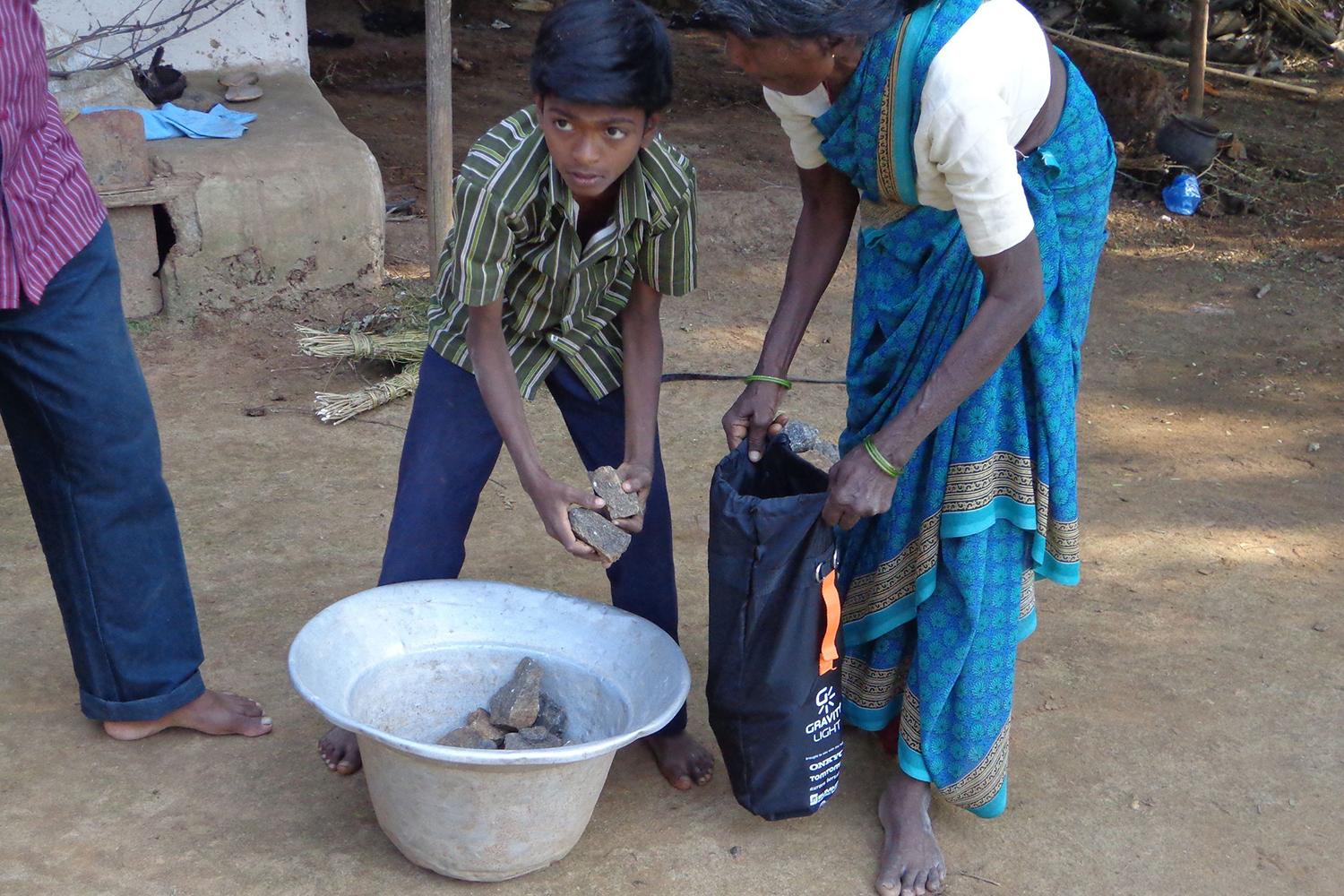You might not realize it here in the developed world, but there are still more than 1.1 billion people on Earth without access to electricity. That means when the sun goes down, they can’t just flip a switch and carry on — they usually have to burn something to provide light. Most households rely on kerosene lamps for their nighttime lighting needs, which are not only expensive to use (often consuming 30 percent of a family’s income), but also spout off fumes that can cause serious health problems over time.
GravityLight offers a solution to this problem. Invented by London-based designers Jim Reeves and Martin Reddiford, it’s essentially a low-cost lighting solution designed for homes in the developing world. Instead of using a traditional power outlet or expensive solar panels for electricity, the lamp uses a cheap and effective gravity-powered system to provide light.
In a lot of ways, the GravityLight’s elaborate system of pulleys and weights do the same job as an old timey water wheel: harness the power of something up high moving downward. Users start by hoisting a 25-pound weight into the air by pulling on a cord. When released, this weight slowly descends back to the ground. “This movement powers a drive sprocket,” the company’s website explains, “which rotates very slowly with high torque (force). A polymer geartrain running through the product turns this input into a high speed, low torque output that drives a DC generator at thousands of rotations per minute.”
This generates enough energy to power a low-power LED, which provides bright white light for about 20 to 30 minutes, depending on the height of the weight. When it reaches the ground, you simply hoist it back up and repeat the process.
Reeves and Reddiford developed the first prototypes of the GravityLight over two years ago, and with the help of a hugely successful Indiegogo campaign, have been testing and refining the design ever since. Now, they’re back with a new and improved version that’s cheaper, brighter, and longer lasting than the first iteration — and once again they’re turning to the crowdfunding community on Indiegogo to help make it a reality.
This time, however, it’s not just about producing a product. All funds gathered from this second campaign will go directly toward constructing a GravityLight assembly line in Kenya, providing not only lights for the country, but also jobs for some of its residents.





